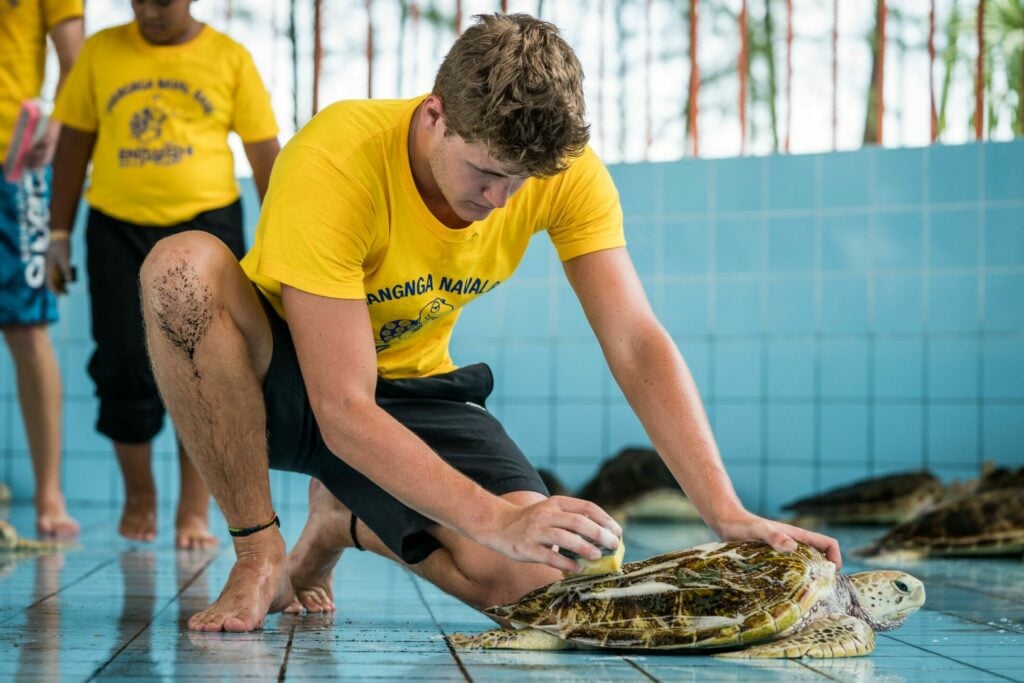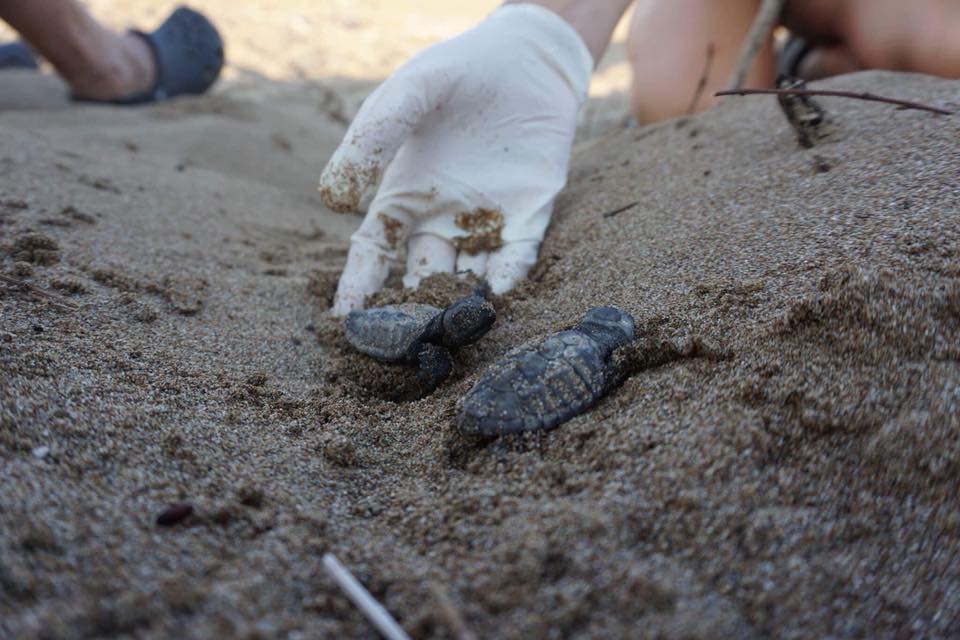Explore the different types of peccaries found in Costa Rica, as well as their importance in the local ecosystem, habitats, behavior, and social structure.
GVI
Posted: May 10, 2023

GVI
Posted: February 23, 2023
With humanity’s ever-increasing impact on the world’s ecosystems, it is more urgent than ever to prioritise conservation efforts for species that are particularly vulnerable to extinction. Turtles are one such group of animals which are facing serious threats from accelerating changes in the natural environment and destabilisation of their habitats. Therefore, it is essential to develop and implement effective strategies to protect these species and prevent their populations from declining further.
Turtles are an integral component of many diverse ecosystems, playing an important role as both consumers and prey species. Many species, such as sea turtles, are migratory and provide essential services such as nutrient transport, pollination, and seed dispersal. This not only helps to maintain the health of local marine and terrestrial environments, but also provides invaluable economic benefits to coastal communities that depend on turtle-based tourism initiatives. Consequently, protecting turtles from further decline is integral to preserving the delicate balance of fragile marine and terrestrial ecosystems.
Unfortunately, turtles are facing a number of threats, including habitat destruction, pollution and illegal hunting. In order to protect these species, it is essential to implement conservation measures such as habitat restoration, pollution control, and enforcement of hunting regulations. Additionally, public education and awareness campaigns can help to raise awareness of the importance of protecting turtles and the need to take action to ensure their survival.
The primary challenge in conserving turtles is their low reproductive rate and slow growth; turtles typically reach sexual maturity at an extremely late age, and typically produce only a few offspring at a time. Consequently, recovering turtle populations from a low population size can be difficult, as any further decline may prove to be catastrophic. Moreover, due to the increasing prevalence of both legal and illegal hunting, poaching has become a major factor in turtle population declines. Ultimately, these various threats compound together to make protecting turtles an uphill challenge.
In addition to hunting, turtles are also threatened by habitat destruction and pollution. As their habitats are destroyed, turtles are forced to compete for resources, leading to further population declines. Pollution can also be a major factor, as it can contaminate the water and food sources that turtles rely on. Finally, climate change is also a major threat, as it can lead to changes in the environment that can be detrimental to turtles.


In order to be successful in conserving the turtle populations, a multi-faceted approach is necessary. This entails protecting turtle nesting sites, enforcing regulations to reduce illegal hunting and poaching, spreading awareness amongst local communities, and developing natural habitat conservation initiatives. Additionally, new technologies such as GPS trackers and remote sensing systems can be used to track turtles and monitor their habitats in real time. By combining these measures with existing regulations, it is possible to protect turtle populations from further decline.
The most effective strategies for restoring turtle populations are those that target all the various threats simultaneously. By implementing multiple layers of protection around nesting sites, it is possible to significantly reduce poaching and illegal hunting. Additionally, long-term initiatives such as education campaigns and outreach activities can help to raise awareness about the importance of turtle conservation and build support for turtle protection initiatives.
It is crucial to understand the impact that human activity has on turtle populations in order to identify effective strategies and solutions. Fishing activities often inadvertently result in the death of immature turtles that are too young to withstand commercial nets. Similarly, beach development often leads to destruction of invaluable nesting sites. By addressing these issues directly, it becomes possible to mitigate the impact of human activity on turtle populations.
Advanced technologies can play a crucial role in helping to preserve turtles by providing invaluable data on their behaviour and habitats. Technologies such as satellite tags can be used to track the movements of individual turtles or groups over long periods of time. In addition, new methods such as robotic exploration of coral reefs can provide valuable insights into the behaviour of marine turtles in their natural habitats. Ultimately, these technologies can help conservationists to better understand the needs of turtle populations and develop effective strategies for protecting them.
International treaties such as CITES have already helped to limit commercial trade of turtles and other endangered species. Additionally, establishing laws that protect important turtle nesting beaches from development can help to safeguard habitats essential for recovery of declining populations. Compliance with existing laws must also be enforced in order for them to be effective in preserving turtle populations.
International organisations such as the United Nations have an important role to play in preserving the habitats that turtles rely on for survival. By providing funding and technical assistance to governments and local organisations, these organisations can help ensure that turtle conservation initiatives are implemented efficiently. Additionally, these organisations are responsible for overseeing the implementation of international treaties designed to protect endangered species.
Raising awareness about the importance of protecting turtles is essential for ensuring long-term success in restoring declining populations. Implementing education initiatives such as training courses for local guides or environmental teachers can help to spread knowledge about conservation techniques among younger generations. By teaching communities about how human actions impact turtle populations, it becomes possible to promote sustainable practices which will benefit both human communities and wildlife.
Creating successful conservation initiatives requires ample funding sources. Governments can provide financial support for turtle conservation initiatives by providing tax incentives or grants for research projects that benefit the environment. Additionally, private foundations can play an invaluable role by supplementing government funds or creating programs which fund specific conservation efforts. Ultimately, gaining access to adequate funding is integral for effective implementation of conservation efforts.
The protection of turtle populations is essential for preserving our environment’s biodiversity and its diverse ecosystems. It is essential for us to implement effective measures that target the various threats that turtles are facing – such as poaching or habitat destruction – if we hope to prevent further population declines. By developing conservation strategies which combine research, policymaking, technology, and education initiatives, we can create a more sustainable future for tortoises, turtles, terrapins, and other species.
GVI offers turtle conservation programs in several locations around the world, including Costa Rica, Greece and Thailand. These programs provide volunteers with the opportunity to work on vital conservation initiatives such as collecting data on nesting turtles, monitoring hatchlings, and protecting nesting sites. By volunteering with GVI, participants can help to protect these incredible animals and contribute to ongoing conservation efforts.

Explore the different types of peccaries found in Costa Rica, as well as their importance in the local ecosystem, habitats, behavior, and social structure.
GVI
Posted: May 10, 2023